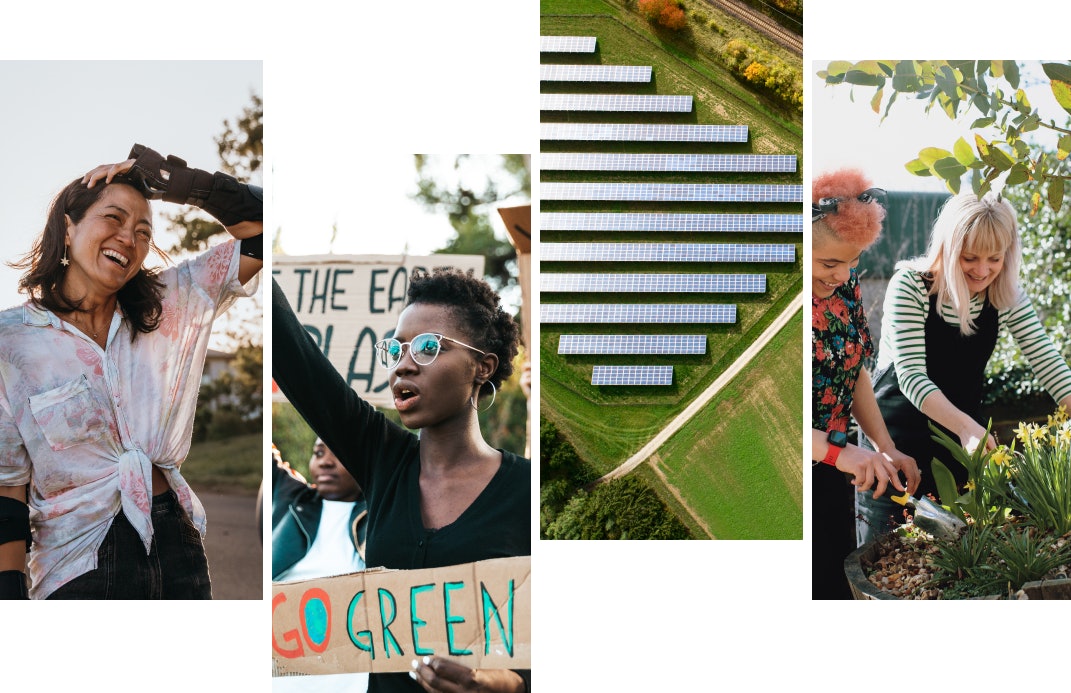Women’s History Month isn’t just a gender issue — it’s a climate issue, too

If you care about the climate crisis, then you should care about gender equality, too. There are plenty of ways to look at climate and women’s equality — take, for instance, the low numbers of women working on solutions in the climate tech industry — but at the end of the day, the connection is simple. Climate change is a gendered issue.
If you’re going to be a feminist on a hot planet, you have to be a climate feminist.-Dr. Katharine K. Wilkinson
This Women’s History Month, we’re taking a look at the connections between gender and climate, and why women need to play a bigger role in climate solutions.
Climate change disproportionately affects women
The climate crisis does not impact everyone equally, or in the same ways. Men cause more climate emissions than women (16% more, by some estimates), but women and girls disproportionately feel the effects. There are economic, cultural, and social reasons for this.
Women make up 70% of the world’s poor, which means that they have less access to the resources that could help them escape or adapt to the effects of climate change. And they tend to be less involved in decisions about how resources are used. For instance, women make up the majority of the world’s food production workers, but they own just 10% of the land.
Socially and culturally, women’s caregiving responsibilities often leave them less able to migrate to escape the effects of climate change. They may be taking care of children or elderly relatives, and usually bear the responsibility of securing housing, food, and water for their families. This leaves them more vulnerable to disasters when they do strike.
It’s hardly a surprise, then, that women are more at risk for negative climate impacts such as displacement — 80% of the people displaced by climate disasters are women — homelessness, poverty, disease, and sexual violence. Multiple studies have shown that physical violence against women increases following climate disasters. After Hurricane Katrina in 2005, physical victimization of women increased by 98%.
Despite their vulnerability to the climate crisis, women aren’t getting help. When the Global Greengrants Fund analyzed the giving of 1,000 foundations worldwide, they found that a measly 0.2% went to efforts focused on women and the environment.

As Dr. Katharine K. Wilkinson, co-editor of the eco-feminist anthology All We Can Save, puts it, “The climate is a multiplier of any cracks, imbalances or injustices that are present in current society. It amplifies them.”
Women are a key part of solving the climate crisis
According to Project Drawdown, empowering women and girls is one of the most impactful climate solutions out there. On their list of 80 climate solutions, Project Drawdown listed “educate girls” as the sixth most impactful tactic, followed directly by “access to family planning.” Combined, these two solutions can help us avoid an estimated 120 billion tons of carbon emissions by 2050. That’s the equivalent to 10 years of emissions from China (at 2014 levels)!
In many cultures, women are the ones who learn how to use natural resources and manage food and water stores. They have a vast knowledge library, passed through generations, that can help their communities become more resilient and adapt to climate change. Women are also more likely to take sustainable actions than men are. Eco-friendly products are disproportionately marketed toward women, both because women are often the ones making decisions about the products to buy at home and because women tend to believe that the climate crisis is a bigger risk than men do. There’s a reason that two-thirds of the organizers of recent US climate strikes self-identify as women.
The differences extend to policy, too. One study found that per-capita carbon emissions were lower in countries where women have strong political representation. Women in the European Parliament are more likely than their male colleagues to support environmental legislation. The same holds true here — female representatives in Congress tend to favor stricter environmental policies than male representatives do.
So if we improve gender equality and bring more women into the conversation, we can improve global warming, too.
The more women in political positions with decision-making power over climate and environmental policy, the stronger and more robust that policy ends up being.-Dr. Ayana Elizabeth Johnson
What does this mean moving forward?
To truly solve the climate crisis, we need to understand what has created it and address those root causes. And to do that effectively, we need all voices because not everyone experiences climate change in the same way.
We also need to ensure that all voices get to weigh in on the proposed solutions so that we design solutions that truly work for all. Studies have shown that white men are more likely than women and people of color to take risks, for example. That matters, because right now, white men are driving the majority of our proposed climate solutions. Women, on the other hand, are more likely to work in networks at the local and community levels and to lead environmental justice efforts. Those are key aspects of solving the climate crisis, too.
Unfortunately, most of the funding for climate solutions is going to white men. Just 15% of venture capital funding in climate tech goes to companies with at least one female founder. That needs to change — women need to be in more boardrooms and their ideas need more funding. And we need more women climate leaders in office, at all levels. That’s something we can all help with.
Join our newsletter
Stay updated with our latest insights, industry trends, and expert tips delivered straight to your inbox


